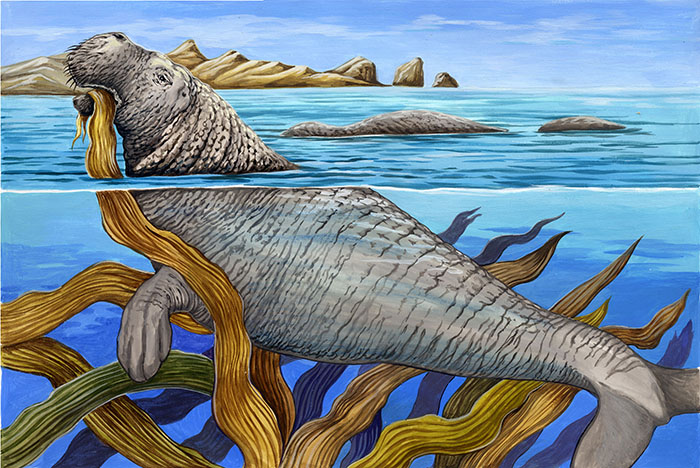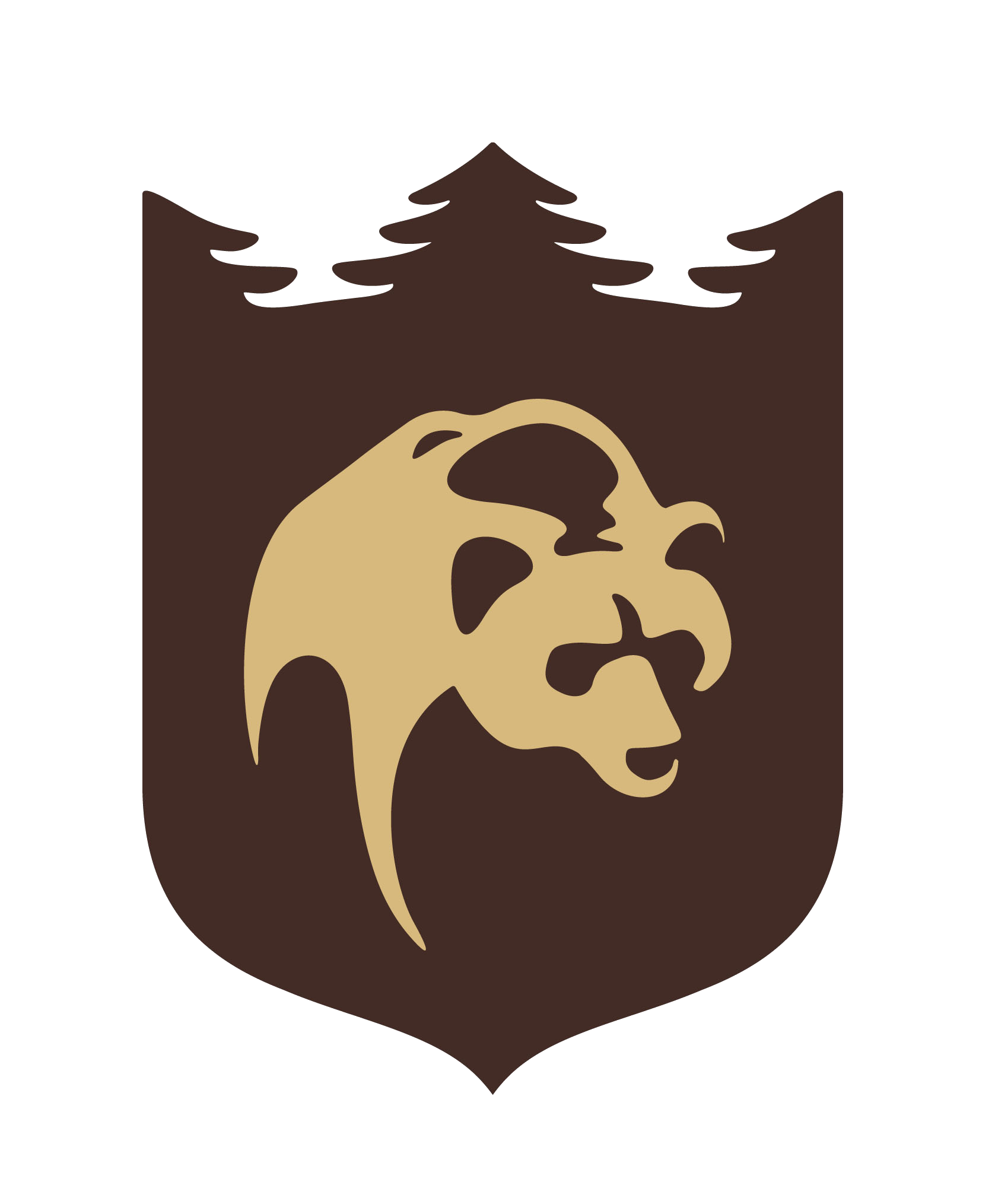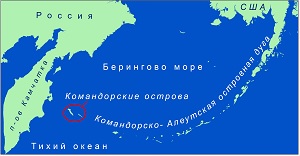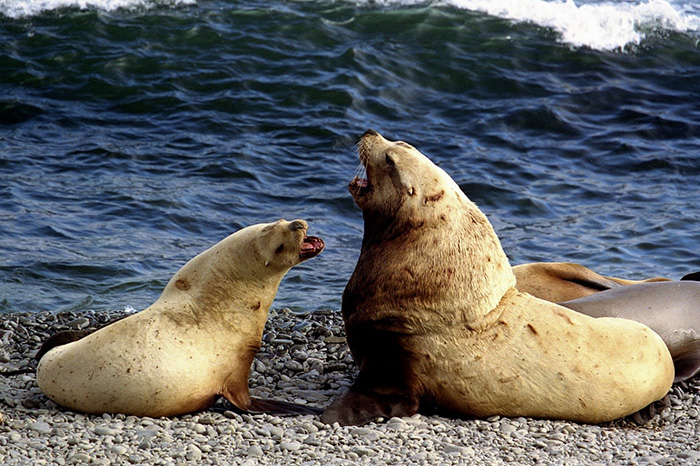The Steller's Sea Cow †Hydrodamalis gigas Zimmermann, 1780

The body length of adult animals was 7,2-10 m, the weight up to 4 tons. Males were a bit bigger than females. There are no data on the size and weight parameters of cubs.
During the discovery and research of the Commander-Aleutian Arc by Vitus Bering’s expedition the sea cow preserved only on the Commander Islands. However, from their fossils it is known that the sea cow also inhabited the western Aleutian Islands. The remains of the sea cow have been also found in Monterey in California. Apparently, the historical area of the species was much more extensive.
The ration of the sea cow consisted mainly of brown algae that formed fields along the shores of the islands. During feeding they raised their heads every 4-5 minutes to take a breath. They didn’t have teeth and ground food with keratinous plates in the mouth. During winter the animals lost a lot of weight because food supplies were depleted.
Sea cows lived in small groups in the coastal strip. The cubs were ahead of the group, slightly surrounded by it, which helped to protect them from enemies.
The only cub was born in fall. The duration of pregnancy was more than a year.
The sea cow was a relative of today's dugongs.
The number during the period preceding the beginning of sea-hunting industry on the Commander Islands is estimated at 1,5-2 ths individuals.
The species was first discovered on the Commander Islands by Georg Steller (1751) in 1741. According to the collected materials and descriptions later the species was included in the system of fauna. Steller was the first and only explorer-naturalist who saw this animal. 27 years later after the discovery of the species in 1768 the sea cow was completely exterminated (in 1754 it was completely exterminated on Medny Island).
Today on the shores of the Commander Islands bone remains of the species are regularly found.









